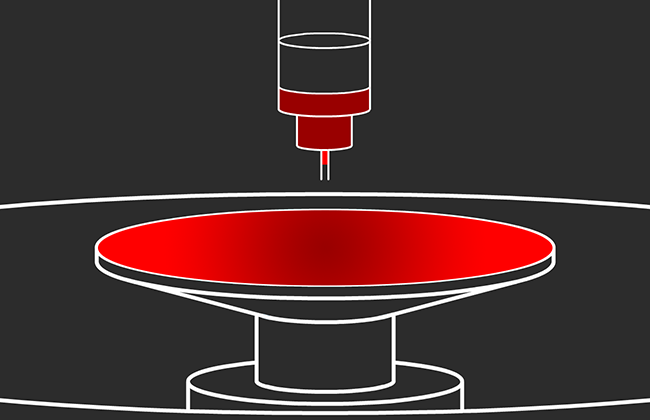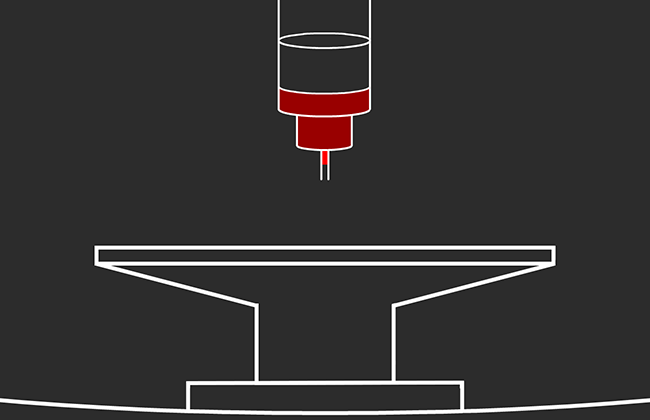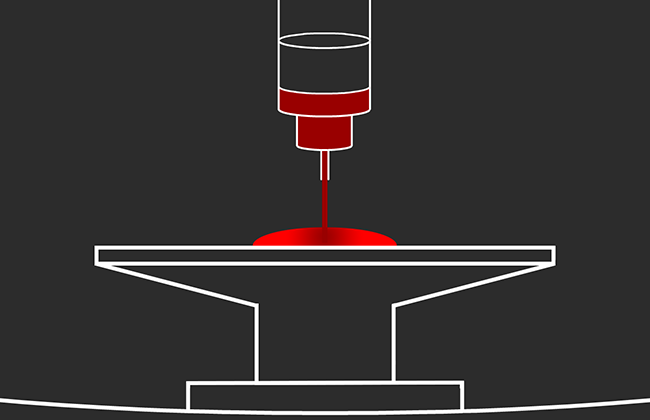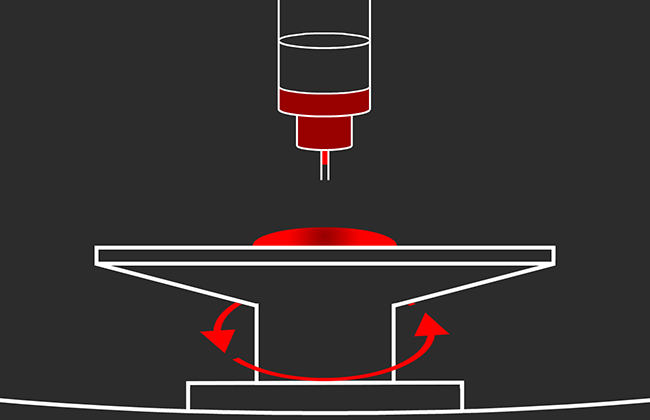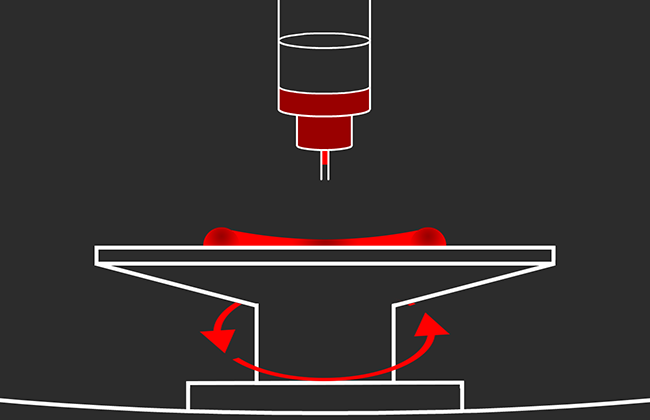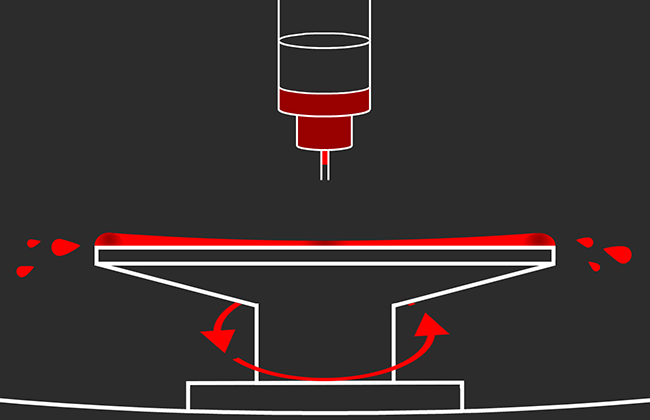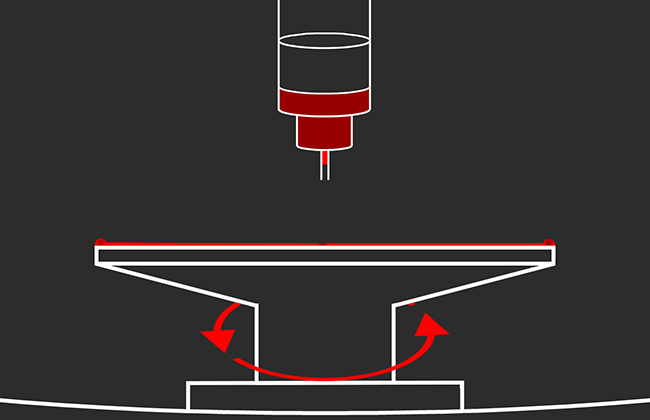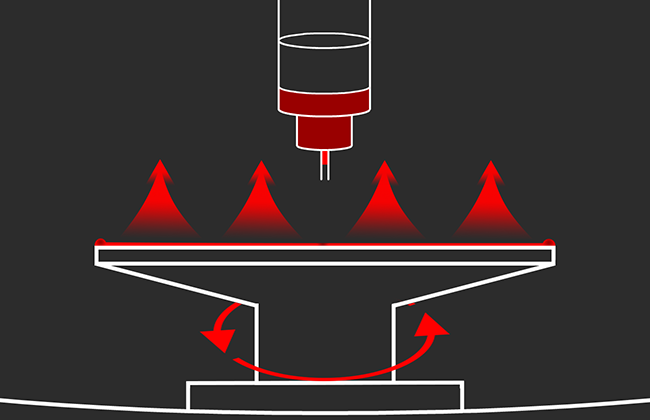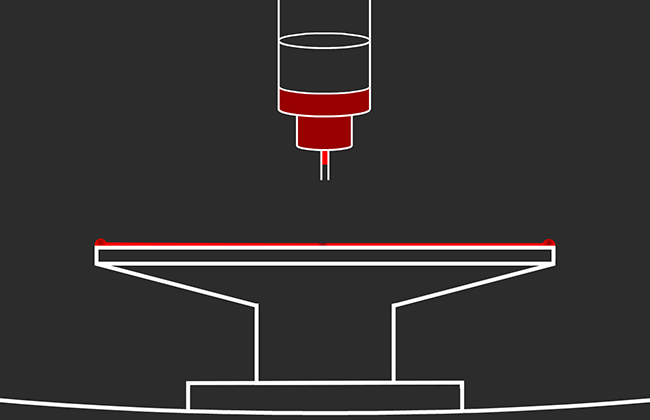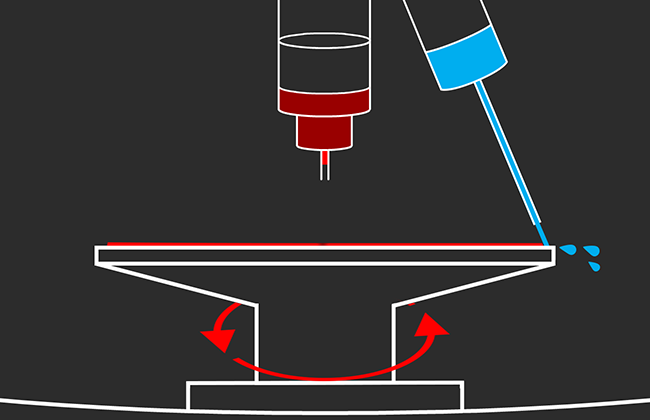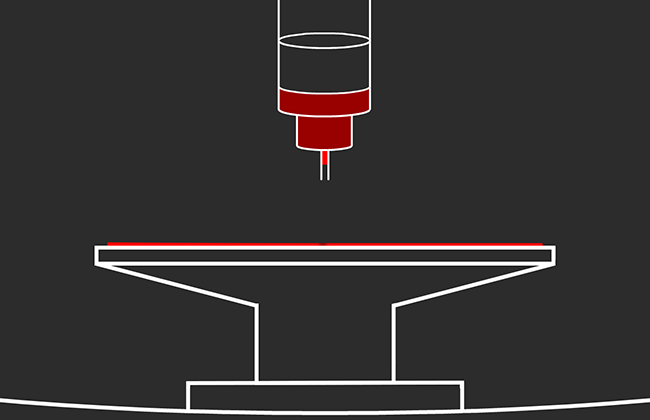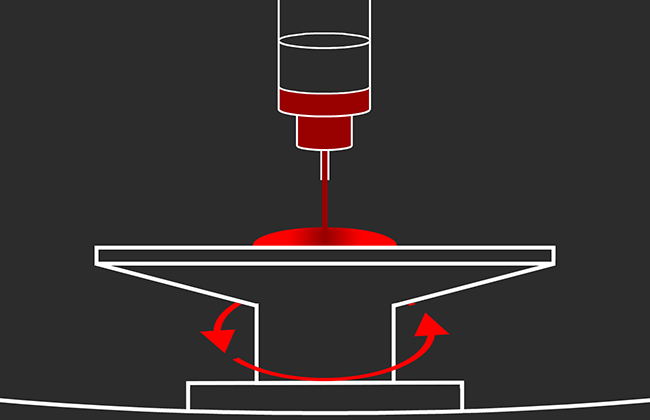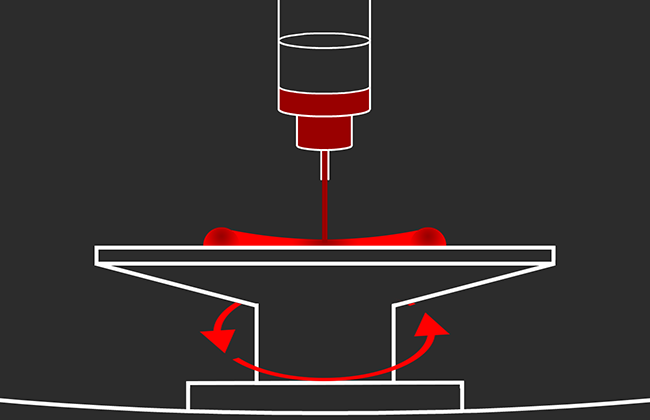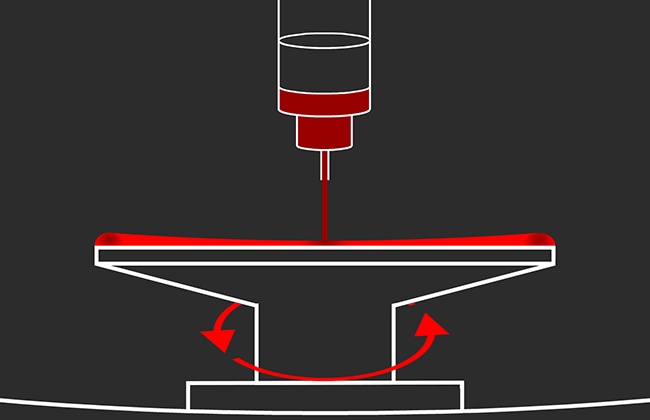What Is Spin Coating?
A: Spin coating is a procedure used to deposit uniform thin films to flat substrates. Usually a small amount of coating material is applied on the center of the substrate, which is either spinning at low speed or not spinning at all. The substrate is then rotated at high speed in order to spread the coating material by centrifugal force.
A machine used for spin coating is called a Spin Coater.
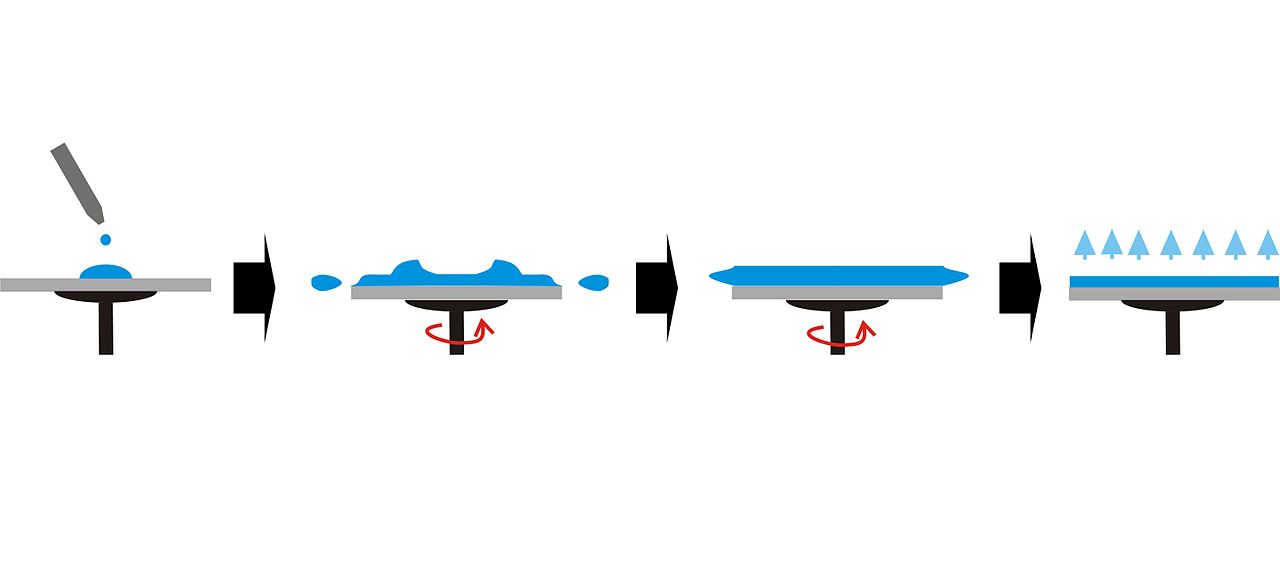
Spin Coating The Basics
Before Coating Your First Wafer
A successful result requires that you pay attention to the following:
- • Environmental conditions including temperature, humidity, airborne particulates, etc.
- • Quality of your consumables — is your chemistry fresh?
- • Cleanliness of your substrate, and equipment. Starting with a contaminated substrate ruins your process before it begins
Correctly Centered Substrate
Centering the substrate accurately on your spin coater allows for consistent coating. Irregular shapes must be centered by eye. Square and rectangular substrates benefit from embedded chucks that automatically center the substrate and reduce edge build up during spin coating.
Start the Rotation
As soon as the correct amount of material is dispensed, begin the coating program. Laurell spin coaters are fully programmable for speed and acceleration at each step of your spin coating recipe.
Accelerate to Final Spin Speed
The last step requires your spin coater to accelerate rapidly to the final spin speed required to create a coating of the correct thickness.
Edge Bead Removal
Edge bead removal on round wafers is best done in your spin coater immediately after the coating process. After the coating is set, a stream of solvent is directed at the edge of the substrate while rotating at a low speed. The wafer continues to spin which allows any remaining solvent to dry.
Dispense While Rotating
The chemistry is dispensed while the spin coater is rotating the substrate at around 500RPM. A smooth stream of material will spread evenly for the best coating.
Accelerate into the Casting Step
As the chemistry reaches the edge, the wafer should be accelerated to remove excess material. From this point on the process is the same as Static Dispense. Dynamic dispense can result in more consistent coatings and help reduce the amount of chemistry used. Reducing the amount of materials used will save money and the time used to clean your Laurell spin coater.
